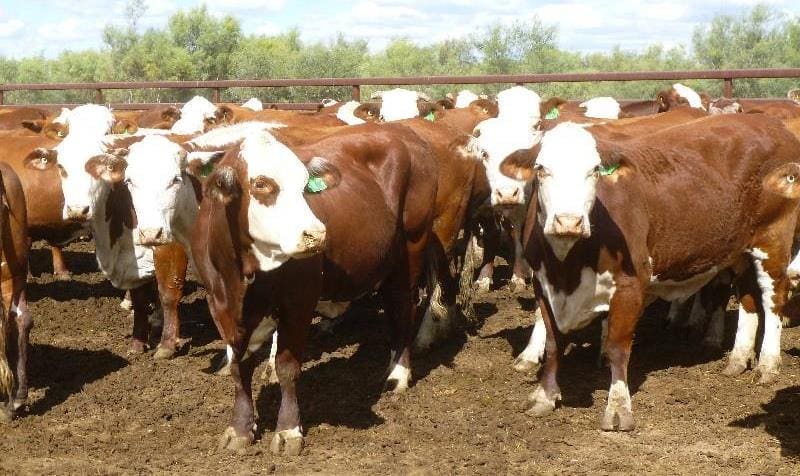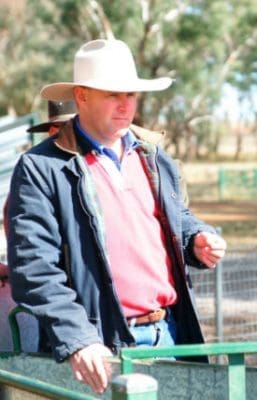
AS producers continue to reshape their drought strategies, the term ‘core breeder group is a common one. Many producers refer to their core breeders, however the definition of these animals is much harder to establish.
Often, when pressed, the description is that the core breeders are the “good ones” or the “reliable ones.” Many producers also refer to the genetics that have been invested in the animals or the selection that has been used to create the herd.
While these points are all equally valid, there is also a high level of emotional value attached to these cattle. This often clouds the decision-making process around the animals, and in drought situations this can restrict timely and well-considered decisions.
The importance of fertility
Defining a core breeder should be an objective process, based solidly in the breeding objectives of a program. The key attributes must come down to those that will directly contribute to the productivity and profitability of the business, particular in the drought recovery phase.
Fertility underpins this attribute. While many producers have already removed from the herd those cows that failed to conceive or rear a calf, this doesn’t automatically mean that any female left is a core breeder. Within the group of pregnant females, or those that have now calved, there will be a group which consistently join and calve later.
These females are often forgiven for their later conception because they still produce a calf.
Perhaps in normal seasons this tolerance is understandable, however in drought conditions where decisions on numbers have to be made, this is a group that can become a focus for removal.
This not only reduces some pressure, but also in the longer term will add to the herd’s fertility and productivity levels.
Genetics are often cited as a key attribute for retention of breeders. While there are often valid reasons for this, there are equally as many herds where this reason is overstated.
As descried in last week’s Beef Central genetics review, there is generally a lag between a seedstock operation and the commercial producer. Bull selection contributes to this lag, particularly if the bulls entering a program are of average or just above average genetic merit.
Not every producer purchases bulls that are in the top EBV percentiles. The practical implication is that the herd these bulls are used in will, genetically, be some time behind leading operations.
The practical outcome is that many herds are perhaps not as genetically superior as many of their owners believe.
As discussed last week, selection pressure and generational interval are two of the options producers have to increase their rates of genetic gain. The drought places a high degree of selection pressure on females. This should be combined with selection from producers to focus on the other attributes that are important in achieving breeding outcomes.
The opportunity to remove females for later or earlier maturity patterns is an obvious one. Often the later-maturity, larger-framed animals are the first to go in a drought, in order to reduce feed demand. Still, this is an opportunity not to overlook.
Structure, temperament
Selection decisions on structure and temperament are also important.
The other key to moving a breeder into the core breeder group is to assess her past history and to evaluate her calves at weaning. Which females are those that consistently calve early, and then wean heavier calves?
Calving early is not enough to make a core breeder. It’s important to capitalise on early calving by having high growth to weaning.
These assessments are often the ones that separate a group of breeding cows into average cows and then a group of core animals.
Not ever animal will display the traits and performance that makes them a productive and profitable female. However in a drought where decisions are often being made about animals, having an objective assessment and considering these areas can add some clarity to the decision-making process.
While selection pressure – particularly nutritional pressure from the season – will help sort breeders out, it’s essential to add the objective scrutiny on each animal in order to find those leading animals.
It’s equally important to consider past bull purchases, and objectively consider if that bull was a genetically superior animal or if he was in the good-to-average category.
This can help take some of the emotional investment out of the selection on genetics, and open up the opportunity to focus on finding genetically better bulls ahead of the next joining season.
Remaining focussed on the key traits and using objective assessments and performance data from past years is an essential requirement to find the most valuable breeding animals.
Without these considerations it will be very hard to separate a core animal from an average breeder.

Alastair Rayner
Alastair Rayner is the Principal of RaynerAg, an agricultural advisory service based in NSW. He regularly attends bull sales to support client purchases and undertakes pre sale selections and classifications. He can be contacted here or through his website www.raynerag.com.au
